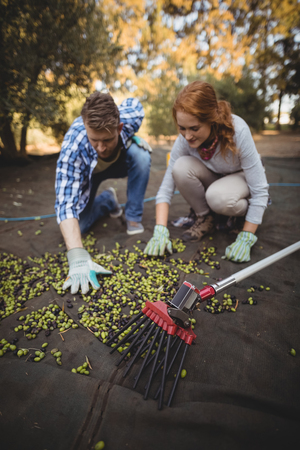1. Assessing Your Garden’s Needs in November
Before winter truly settles in, November is the perfect time to take a close look at your garden and decide what needs extra care. This step is essential for gardeners across the United States, whether you’re dealing with frosty nights in Minnesota or mild autumns in California. Here’s how you can evaluate your garden’s condition and prepare it for the colder months ahead.
Check Plant Health
Walk through your garden and inspect each plant. Look for signs of disease, pests, or damage from earlier in the season. Healthy plants are more likely to survive winter, but any that look stressed may need special attention. Pay extra attention to:
- Yellowing leaves
- Wilting stems
- Spots or mold on foliage
- Broken branches
Identify What Needs Extra Protection
Certain plants and garden features are more vulnerable to cold weather than others. Use the table below to help decide which items might need additional winter protection:
| Garden Element | Why Protect? | Protection Tips |
|---|---|---|
| Tender Perennials (e.g., dahlias, cannas) | Sensitive to frost and freezing temps | Mulch heavily or dig up bulbs for indoor storage |
| Younger Trees & Shrubs | Shallow roots, prone to frost heave and animal damage | Add mulch around base; use tree wraps for trunks |
| Potted Plants | Pots can crack, roots freeze faster above ground | Move pots indoors or group together against a south-facing wall |
| Vegetable Beds (e.g., garlic, overwintering greens) | Exposure to harsh winds and temperature swings | Add straw or leaf mulch over beds; use row covers if needed |
| Irrigation Systems & Hoses | Leftover water can freeze and cause damage | Drain hoses and irrigation lines; store inside if possible |
Create a November Garden Checklist
Making a simple checklist helps ensure nothing gets overlooked during your garden assessment. Here’s a sample list to get you started:
- Inspect all perennials and shrubs for health issues
- Note which plants are most exposed to wind or cold spots in your yard
- Check that mulch is still in place and add more if needed
- Look for standing water or drainage problems after fall rains
- Review garden tools, containers, and accessories—clean and store as necessary
By taking these steps in November, you’ll be setting your garden up for a smooth transition into winter—and an even stronger comeback next spring.
2. Preparing Perennials and Shrubs for Winter
Pruning Perennials and Shrubs
November is the ideal time to get your perennials and shrubs ready for winter in most parts of the U.S. Pruning helps keep your garden tidy and can prevent diseases next spring. Cut back dead or diseased stems, but don’t go overboard—some plants benefit from keeping their old growth as extra insulation.
What to Prune and What to Leave
| Plant Type | Prune in November? | Notes |
|---|---|---|
| Herbaceous Perennials | Yes | Cut down to a few inches above ground once foliage dies back. |
| Shrubs (e.g., hydrangea) | No/Selective | Remove dead wood only; heavy pruning can wait until early spring. |
| Roses | Yes (lightly) | Trim long canes to prevent wind damage; save major pruning for spring. |
Mulching for Cold Protection
Mulching is one of the best ways to protect roots from freezing temperatures and sudden thaws. Spread 2–4 inches of mulch around the base of perennials, shrubs, and young trees. Use materials like shredded leaves, straw, or wood chips. Just be sure not to pile mulch directly against stems or trunks to avoid rot.
Benefits of Mulching in November
- Keeps soil temperatures stable during cold snaps and warm spells
- Helps retain soil moisture during dry winter months
- Adds organic matter as it breaks down, improving soil health
Protecting Plants from Frost and Snow
Early frosts and heavy snow can damage tender plants. For extra protection, cover sensitive perennials with burlap or frost cloth on especially cold nights. Wrap smaller shrubs with burlap or use wire cages filled with leaves for insulation. Young trees might need trunk wraps to prevent cracking from temperature swings.
Quick Tips for Winter Plant Protection:
- Water deeply before the ground freezes—moist soil holds heat better than dry soil.
- Avoid fertilizing late in the season; new growth is more vulnerable to cold.
- Mark plant locations with stakes if you expect deep snow, so you don’t accidentally trample them later.
Your November efforts will help your garden weather winter’s challenges and come back strong in spring!

3. Lawn Care and Leaf Management
Final Mow of the Season
As November rolls in, it’s time to give your lawn its final haircut before winter sets in. Set your mower blade to about 2-2.5 inches high. Cutting the grass too short can stress the turf, but leaving it too long may invite mold and pests. A moderate height helps prevent snow mold and allows the grass to photosynthesize as long as possible before going dormant.
Recommended Mower Height for Final Cut
| Grass Type | Mower Height (inches) |
|---|---|
| Cool-Season Grasses (Kentucky Bluegrass, Fescue, Ryegrass) | 2 – 2.5″ |
| Warm-Season Grasses (Bermuda, Zoysia) | 1.5 – 2″ |
Proper Leaf Removal Techniques
Fallen leaves may look pretty, but if they pile up on your lawn, they can smother the grass and cause disease. Use a rake or leaf blower to remove thick layers of leaves regularly throughout November. If you prefer a more eco-friendly method, consider using a mulching mower to chop leaves into small pieces that will break down naturally and enrich your soil.
Leaf Removal Options
| Method | Best For | Tips |
|---|---|---|
| Raking | Small yards or gardens with delicate plants | Use a flexible rake; be gentle around flower beds. |
| Leaf Blowing | Larger lawns or areas with heavy leaf fall | Blow leaves onto a tarp for easy collection. |
| Mulching Mower | Lawns needing extra organic matter | Mow when leaves are dry for best results. |
Composting Autumn Debris
Don’t let all those fall leaves go to waste! Composting is a great way to recycle autumn debris while creating rich, nutritious soil for next spring. Shred your leaves before adding them to the compost bin—they’ll break down faster this way. Mix green materials (like grass clippings) with brown materials (like dry leaves) for balanced compost. Turn the pile every few weeks to keep it aerated and speed up decomposition.
4. Protecting Vegetable and Herb Gardens
Harvest Remaining Crops
Before the first hard frost hits, walk through your vegetable and herb beds and pick any remaining produce. Many cool-season crops, like kale, carrots, and Brussels sprouts, can tolerate a light frost and may even taste sweeter afterward. However, tender vegetables such as tomatoes, peppers, and basil should be harvested before temperatures dip below freezing.
| Crop | When to Harvest | Storage Tips |
|---|---|---|
| Tomatoes | Before first frost | Ripen indoors in a paper bag if still green |
| Kale & Collards | After light frost | Store in fridge, or blanch and freeze |
| Basil | Before first frost | Make pesto or dry leaves for winter use |
| Carrots & Beets | After frost but before ground freezes | Leave in ground with mulch or store in cool, moist place |
Amend Your Soil
After harvesting, take the time to feed your soil. November is a great month to add organic matter like compost, aged manure, or shredded leaves. This helps replenish nutrients lost during the growing season and improves soil structure for next spring. Gently work amendments into the top few inches of soil, being careful not to disturb any perennials you want to keep.
Popular Soil Amendments for Fall:
- Compost: Adds nutrients and improves drainage
- Aged Manure: Boosts fertility for next year’s crops
- Shredded Leaves: Adds organic matter and encourages earthworms
- Cover Crop Seeds (like clover or rye): Prevents erosion and adds green manure when tilled under in spring
Cover Garden Beds for Winter Protection
Protect your garden beds from harsh winter weather by covering them. Mulching helps insulate soil, prevents erosion from heavy rain or snow, and keeps weed seeds from sprouting early in spring. Use materials such as straw, chopped leaves, pine needles, or burlap. For raised beds or sensitive plants, row covers or cold frames can provide extra protection against freezing temperatures.
| Covering Material | Main Benefit |
|---|---|
| Sraw or Hay (weed-free) | Keeps soil warmer; prevents erosion |
| Chopped Leaves | Adds organic matter as it breaks down; insulates roots |
| Pine Needles | Sheds water well; good for acid-loving plants |
| Burlap Fabric | Covers delicate herbs; allows air circulation while protecting from wind chill |
| Row Covers/Cold Frames | Extends harvest season; shields from extreme cold and pests |
Tip:
If you’re using mulch or cover materials, wait until the ground has started to freeze so rodents don’t make cozy homes underneath.
5. Winterizing Garden Tools and Equipment
As November rolls around, it’s important to take some time to care for your garden tools and equipment before winter sets in. Proper cleaning, sharpening, and storage will help make sure everything is ready for action when spring arrives. Here’s how to get your gear winter-ready:
How to Clean Your Garden Tools
Start by removing any dirt or plant residue from shovels, pruners, trowels, and other hand tools. Use a stiff brush or putty knife for stubborn soil. For sticky sap or rust, try scrubbing with steel wool or sandpaper. If needed, wash tools with water and mild soap, then dry thoroughly to prevent rust.
Cleaning Checklist
| Tool/Equipment | How to Clean | Extra Tips |
|---|---|---|
| Hand Tools (shovels, trowels) | Brush off dirt, wash if needed | Dry completely after washing |
| Pruners & Shears | Remove sap with rubbing alcohol | Sterilize blades to prevent disease spread |
| Hoses | Drain water fully, wipe down exterior | Check for leaks or cracks |
| Lawn Mower | Remove grass clippings and debris | Follow manufacturer’s winterizing instructions |
Sharpening Tools for Next Season
Dull blades make gardening harder than it should be. Use a sharpening stone or file on pruners, shears, hoes, and shovels. Always sharpen away from your body and follow the original edge angle of the blade. Wipe blades with a little oil afterward to prevent rust during storage.
Storing Tools and Equipment Properly
Once your tools are clean and sharp, store them in a dry place like a shed or garage. Hang hand tools on hooks or pegboards to keep them organized and off the ground. Coil hoses loosely and store them indoors if possible—freezing temperatures can cause them to crack. Drain all fuel from gas-powered equipment such as lawn mowers or trimmers following the manufacturer’s guidelines.
Storage Tips Table
| Item | Best Storage Method | Why It Matters |
|---|---|---|
| Hand Tools & Blades | Hang on wall racks/pegboards in a dry area | Keeps edges sharp and prevents rusting |
| Garden Hoses | Coil loosely; store indoors if possible | Avoids kinks and freezing damage |
| Lawn Mower/Power Tools | Shed or garage after draining fuel/oil as recommended | Keeps parts from seizing up over winter months |
| Pots & Containers | Nest together upside down in storage area | Avoids cracking from snow or ice |
A Little Effort Goes a Long Way!
Taking just a few minutes this November to winterize your garden tools and equipment can save you time, money, and frustration come spring. Your future self—and your garden—will thank you!
6. Wildlife and Bird Support
As temperatures drop in November, local wildlife and birds need a little extra help to get through the cold months. Providing food, water, and shelter can make your garden a welcoming spot for them all winter long.
Ways to Help Local Wildlife and Birds
Set Up Feeders
Bird feeders are a great way to support feathered friends when natural food sources become scarce. Fill feeders with high-energy seeds like black oil sunflower seeds, suet cakes, or peanuts. Remember to clean feeders regularly to prevent disease.
Common Winter Bird Foods
| Type of Food | Best For |
|---|---|
| Black Oil Sunflower Seeds | Cardinals, chickadees, finches |
| Suet Cakes | Woodpeckers, nuthatches, wrens |
| Peanuts (unsalted) | Blue jays, woodpeckers, titmice |
| Niger (Thistle) Seed | Goldfinches, pine siskins |
Provide Water Sources
Fresh water is essential but often hard to find in winter. Place a birdbath in your yard and consider using a heated birdbath or adding warm water throughout the day to keep it from freezing.
Create Natural Shelter
Pile up fallen branches or leave some leaf litter in quiet corners of your garden. These materials offer shelter for small mammals, insects, and ground-feeding birds. If you have dense shrubs or evergreen trees, avoid heavy pruning until spring so they can serve as natural protection from wind and snow.
Shelter Ideas for Wildlife
| Shelter Type | Who Benefits? |
|---|---|
| Piles of sticks or brush | Small mammals, birds, insects |
| Leaf litter areas | Ground-feeding birds, pollinators overwintering as larvae or eggs |
| Dense shrubs/evergreens | Sparrows, cardinals, rabbits |
| Birdhouses with small entrances | Wrens, chickadees, bluebirds (especially in southern regions) |
A few simple steps can make your garden a safe haven for wildlife and birds during the colder months. With some thoughtful planning this November, you’ll enjoy watching more visitors throughout the winter season.
7. Planning for Next Year’s Garden
November is a great time to start thinking ahead and get a jump on planning your garden for next year. While the weather may be chilly, you can use this quieter season to reflect on what worked, what didn’t, and how you want your garden to grow in the coming spring. Here’s how you can set yourself up for gardening success:
Reflecting on This Year’s Garden
Take some time to walk through your garden or look at photos from earlier in the season. Consider these questions:
- Which plants thrived and which struggled?
- Were there any pests or diseases that caused problems?
- Did you have enough space, sun, or shade?
- What would you like to try growing next year?
Planning and Mapping Your Garden
Start sketching out ideas for next year’s layout. You can use a simple notebook or try free online tools to map your garden beds. Think about rotating crops to prevent soil problems and planning companion plantings for better yields.
Garden Planning Checklist
| Task | Why It Matters |
|---|---|
| Review last season’s notes/photos | Avoid repeating mistakes, remember successes |
| Sketch new layouts | Optimize space and sunlight for each plant |
| Plan crop rotation | Prevents soil depletion and reduces pests |
| Select new varieties to try | Add interest and improve harvests |
| Set goals (e.g., more pollinator plants) | Makes your garden healthier and more beautiful |
Ordering Seeds and Supplies Early
The best seed catalogs arrive in late fall and early winter. Ordering seeds early gives you the best selection—popular varieties can sell out quickly! Make a list of what you want to grow, then order seeds, seed-starting supplies, and any new tools while stock is high.
Tips for Smart Seed Ordering:
- Check expiration dates on leftover seeds from last year before ordering more.
- Look for varieties suited to your USDA Hardiness Zone.
- Consider joining a local seed swap or gardening club for unique finds.
- Order extra seeds if you plan to start seedlings indoors for friends or neighbors.
Stay Inspired!
This is also a fun time to flip through gardening books, browse online forums, or visit local garden centers for inspiration. The planning you do now will make spring planting easier and more exciting when the time comes!


